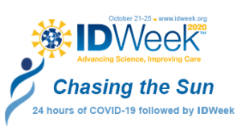Session : HIV in Special Populations
112 - A Quality Management Project of a Midwestern Academic HIV Clinic Operation During COVID-19: Implementation Strategy and Preliminary Outcomes
Oral Abstract
Location: On Demand
Background: During the COVID-19 pandemic, HIV clinics had to transform care delivery in order to ensure retention in care (RIC) for people with HIV (PWH). The objective of this quality management project is to maintain high rates of RIC and viral load suppression (VLS) during the pandemic for PWH receiving services at an academic HIV clinic in the Midwest.
Methods: We developed a multifaceted implementation strategy for clinic operation using a combination of telehealth and in-person visits. The strategy included: 1) assess for readiness and identify barriers and facilitators, 2) identify and prepare champions, 3) organize clinician implementation meetings, and 4) staff training. As a result, we developed an implementation blue print with criteria for telehealth vs. office visits, criteria for rescheduling patients, conducted staff training on telehealth and personal protective equipment, and changed the clinic structure to accommodate in-person visits for patients who did not meet telehealth criteria and walk-ins. We monitored VLS (defined as HIV RNA < 200 copies per mL) and RIC as measured by medical visit frequency (MVF, defined as percentage of patients who had one visit in each 6 months of the preceding 24 months with at least 60 days between visits); and gap in care (GiC, defined as no visit in the preceding 6 months).
Results: As of June 14, 2020, there were 1140 active PWH receiving care at the clinic. By February 29, 2020 there were 34 patients lost to care as (defined as no visit within the preceding 12 months). Between March 1 and June 14, 2020 we conducted a total 943 visits, out of which 642 (68%) were in person and 301 (32%) were telephone visits. By end of May 2020, there were 47 patients lost to care. MVF decreased to 40% compared to 69% for FY2020, and GiC increased to 25% compared to 14% for FY2020. VLS rate remained unchanged at 91%.
Conclusion: The COVID-19 pandemic resulted in a decrease in MVF and an increase in GiC for PWH. However, VLS remained high at 91%. Our implementation strategy facilitated quick adoption of telemedicine, which helped us provide clinical care to a third of PWH during the pandemic. Telemedicine provided a great tool for ensuring patients remain VLS. Evaluation of implementation outcomes including fidelity and reach remains ongoing.

Nada Fadul, MD
Associate Professors
University of Nebraska Medical Center
Omaha, NEDisclosure: I do not have any relevant financial / non-financial relationships with any proprietary interests.


